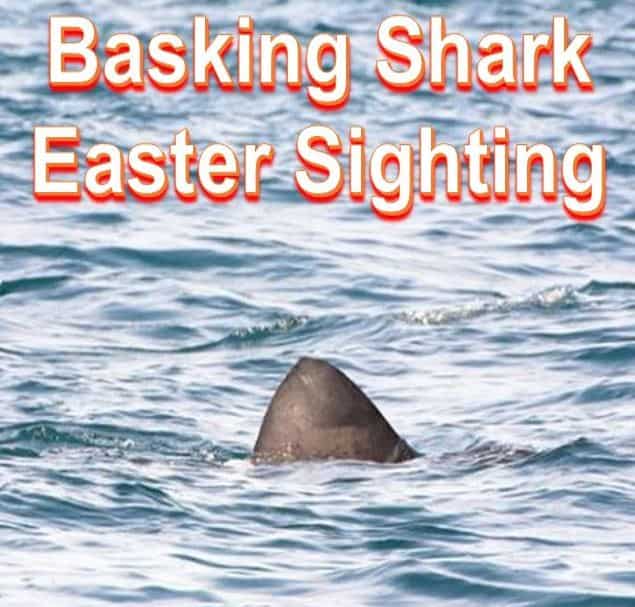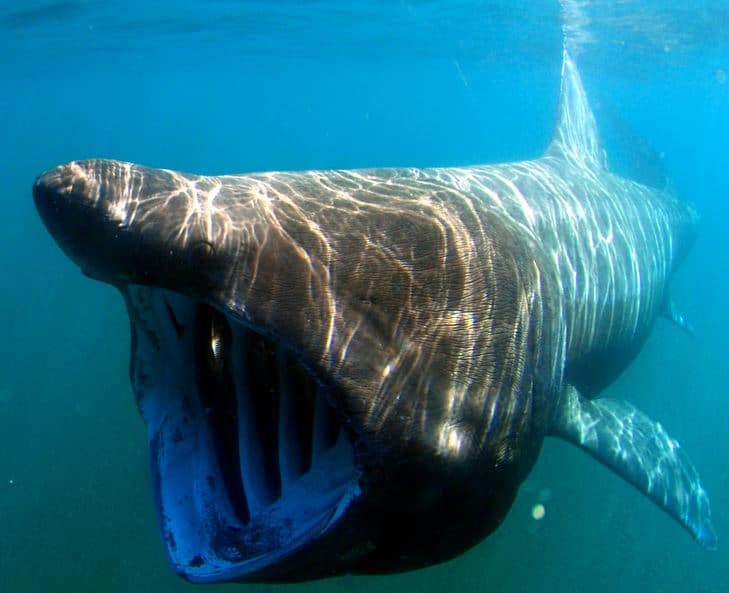Basking sharks do not usually appear in Scottish waters until the summer. However, Basking Shark Scotland reports ten different sightings over Easter of the world’s second-largest living fish, after the whale shark.
The basking shark, which can measure up to 40 feet in length (about 12 metres) and weigh more than seven tonnes, feeds on plankton and does not attack humans, despite its fearsome and magnificent appearance.
Experts believe the recent winter storms are likely to have unlocked the nutrients for a super-early bloom of zooplankton, the basking shark’s favourite food.

Basking sharks are not usually seen in British waters until the summer. (Image: Basking Shark Scotland Facebook)
The animals were seen during the Easter break near the isle of Coll, located west of Mull in the Inner Hebrides. The sighting was not only one of the earliest ever made in these waters, but also across the United Kingdom.
During the summer, basking sharks are often sighted off the west coast of Scotland, Cornwall and the Isle of Man.
While Cornwall can usually boast as the most common location for each year’s first sightings, recently fewer of them have been seen in that part of the country’s waters.
According to Basking Shark Scotland, the Hebrides is probably the best place on Earth for visitors to see these spectacular, giant animals.

Basking sharks typically range in length from 6 to 8 metres (20 to 26 feet). In 1851, in the Bay of Fundy, Canada, one specimen had a length of 12.27 metres (40.3 feet). (Image: Wikimedia)
The Aberdeen Press & Journal quoted Shane Wasik of Basking Shark Scotland, who said:
“We were hugely excited about the early arrival. We would normally be expecting them from May onwards, however it’s both intriguing and amazing to have them early.”
“One possible reason for the early arrival and plankton bloom could be in conjunction with the frequent high wind and storms this winter which could have unlocked natural upwelling and nutrients availability in the Atlantic. This in turn has provided the perfect conditions for generating shark food.”
Basking Shark Scotland encourages individuals to submit their own sightings so that the organization can expand its data set. “In this way we can be the scientists fieldworkers as they only have limited budgets to be in the field for short times,” it wrote in its website.
Video – Basking shark footage
Basking Shark and Snorkeler footage filmed by Basking Shark Scotland’s Shane Wasik.
